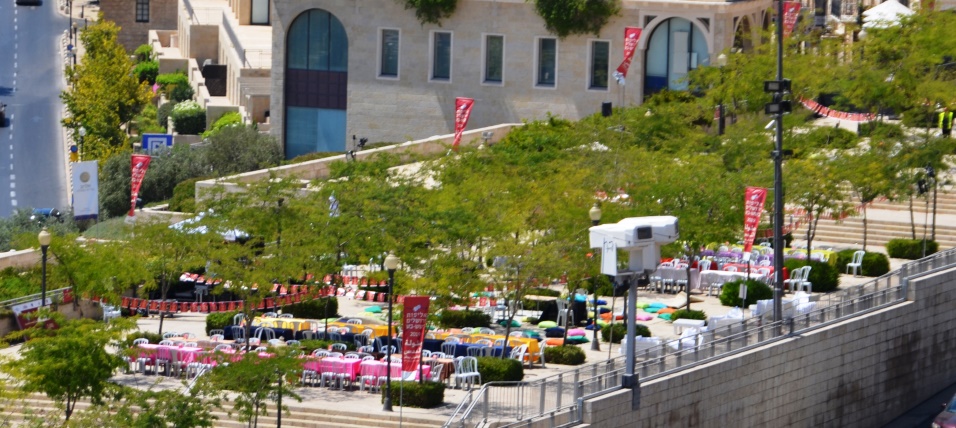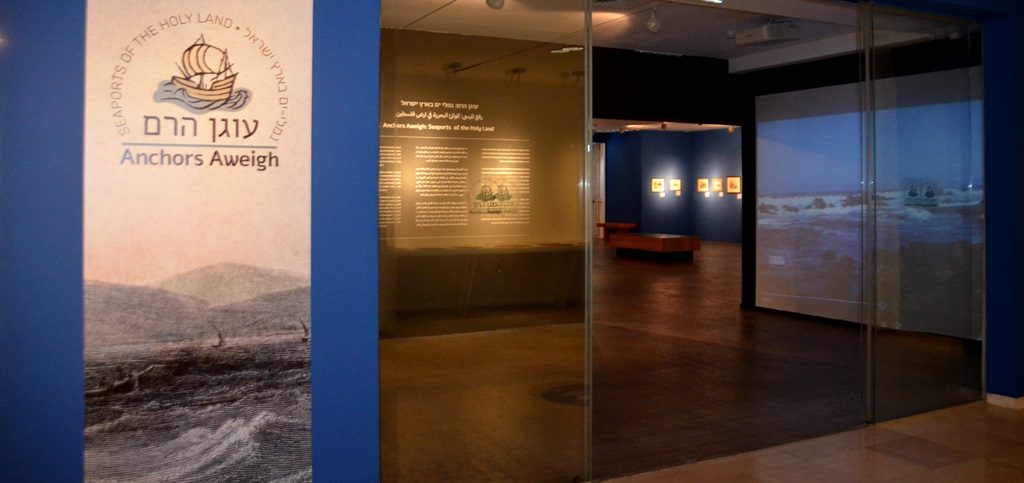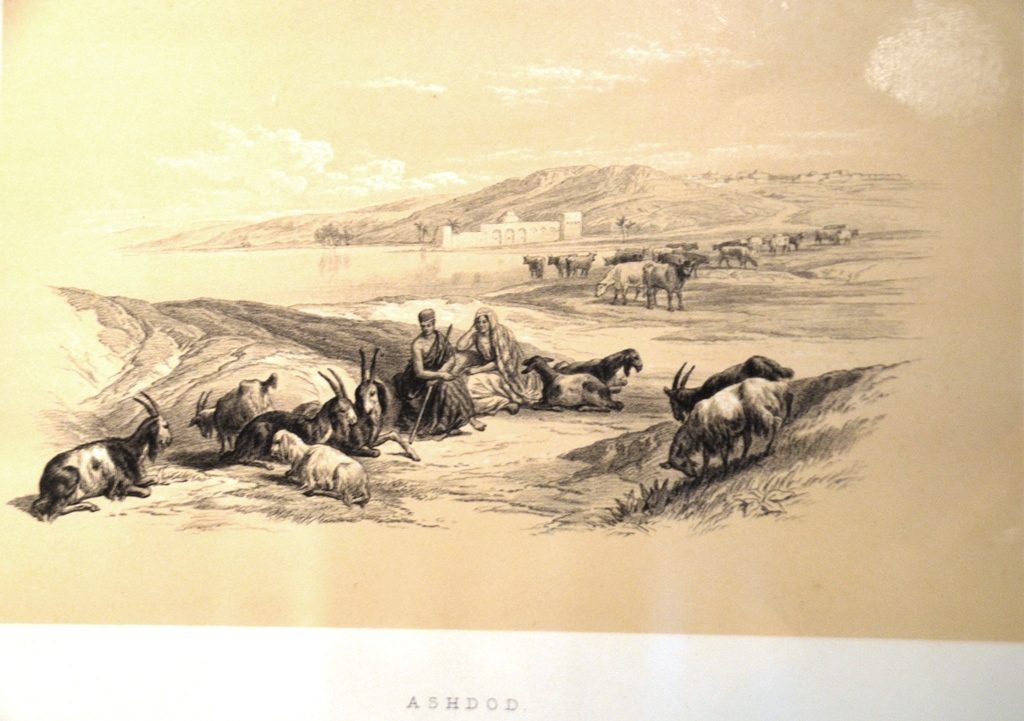Jerusalem offers a wide array of activities before the new school year begins.
Searching for a good quote for “circus” I found “preserving the past, promoting the future.”
What could be more appropriate for Jerusalem, Israel?

What could be more appropriate for the Circus at the Tower of David?

In the venue of historic ancient stones, the past is carefully preserved.
The Circus being held this August is especially aimed at young families.
Encouraging. Enriching. Exciting.
Providing educational and enjoyable activities that promote the future.

From the Tower of David, you get panoramic and dramatic views of Jerusalem.
From the top of the Tower of David, we could see the area above Mamilla Mall across from the Old City walls near Jaffa Gate was set and ready for a shesh-besh tournament. Backgammon players of all ages were invited to enter the public competition.
The plaza area near Jaffa Gate was not the only place that was busy this summer.

The Liberty Bell Park was one of the locations of the 360 Degree music and theater festival.

Diverse populations attended these events that were open to the public and free of charge. This was a drum circle, with standing room also.

I took this photo of a young woman ready to do face painting for the children in the park.
If you look closely the women behind her are wearing hijabs and having a picnic dinner.

In Bloomfield Park, Shakespeare’s Measure for Measure in Motion holds its last performances on August 25, 26, and 27. The annual theatrical event attracted the attention of Yiddish-speaking children who were in the park on family outings. Shakespeare is not taught in Israeli schools, and this is one fun way to preserve the Bard.

Hansen House, the old leper hospital, now the site of innovative programs, is presenting end-of-summer activities for families. Locals may be away, but a few children were doing activities in the Hansen courtyard. Sunday night was scheduled for a grand opening.

Preserving the past, the National Campus for the Archaeology of Israel, had a grand opening almost three years ago.

The huge complex was meant to showcase Israeli archaeology.

The innovative architectural designed building was to be home to researchers preserving the past. Visitors could watch work being done through glass walls.

Rooms were dedicated to each era and the ancient finds were to be on display.

Down in the depths, the most ancient and valuable pieces were to be preserved and displayed.

The front still appears the same from the street as on our exciting initial visit, only now the doors are chained shut. It will take a huge new cash infusion to promote the campus in the future.

The Bible Lands Museum Jerusalem (BLMJ) is next to the shuttered campus.

BLMJ has rare antiquities carefully preserved and ancient relics on exhibition.

In the spring the Highway through History exhibit opened.

Displays and photographs of the #38 Highway expansion are seen near the entrance.

However, driving by the site on the way to Beit Shemesh, was a very different experience.

I know they said it was big and close to the road, but as we drove by it was hard to capture how expansive the site is. Everywhere in Israel, preserving the past and promoting the future is a balancing act, as Beit Shemesh Mayor Aliza Bloch and museum curators said at the opening of the Highway Through History exhibition.
The newest exhibit Anchors Aweigh opened this week.

The exhibit is dedicated to seaports and is located downstairs in the museum.

Out of the Blue and with its blue threads was the previous exhibit on display in this space.

Fifty works of Holy Land seaports from the private collection of Yossi Gilben are on display.

This 1839 lithograph by D. Roberts is of Ashdod. What a contrast to the thriving city and port today.

Troops heading north to Sidon are depicted in this D. Roberts lithograph, also dated 1839, in Gaza.

Jaffa was the closest port to Jerusalem. It was not a natural harbor and lacked deep water, so those arriving had to disembark onto small crafts to reach land. It was destroyed in the 13th century after the Crusade-era and remained in ruins for hundreds of years.
In the 15th century as more pilgrims came to the Holy Land they would spend a night or two in the ruins and head for Jerusalem. Finally, in the mid-17th century, the Ottomans allowed a small group of Franciscan monks to settle in Jaffa and care for European pilgrims. Later they were granted permission to establish a hospice.
This engraving by O. Dapper is from 1677 shows the port and citadel, along with some buildings, in German, Ioppen in Palestine.
The other seaports of Ashkelon, Haifa, and Caesarea are included in Gilben’s impressive lithographs and engravings collection which has preserved the past for us to enjoy now.

This map placed just outside the main room is from the collection of Batya Borowski.

Jewish Holy Land with allotments of the 12 tribes in German is the title of the wood engraving by S. Munster (ca. 1550).
It was pointed out to us, that the map with the south on the upper area and the Mediterranean on the right side, was due to a printing error. It seems as back as the early days of printing, even those who honored and yearned for Jerusalem did not always get their facts straight, as they had never been to the Holy Land.
Leonardo DaVinci is featured at the Bloomfield Science Museum.
The Israeli Museum always attracts families during the summer holidays.
It is hot. Streets are almost empty of cars.
But as always good things are happening on and under the Jerusalem, Israel streets as the summer wanes.
Wow-!! You cover so much – that takes lots of hard work!!! Those of us who are far away can have a glimpse of what is going on in Israel – so important. It draws us closer.
Thank you! How lovely to comment and glad to know efforts are appreciated.
Great coverage as always!
Thank you for the pictures of how the local residents do interact, spend time in western Jerusalem, Jews, Arabs, of all different places on the religious spectrum. In truth ‘ the Real Jerusalem Streets’ . I eagerly await your weekly postings
Thank you. Only wish more people could be reached to see what is really happening. Chodesh tov and shavuah tov.
Pingback: It’s Hanukkah in Jerusalem – The Real Jerusalem Streets
Pingback: In Jerusalem, Hanukkah lights in the darkness – The Real Jerusalem Streets
Pingback: In Jerusalem Preserving and Presenting the Past in New Ways – The Real Jerusalem Streets